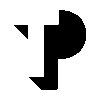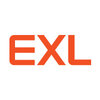Filter interviews by
Wintech Quality Assurance and Testing Interview Questions and Answers
Wintech Quality Assurance and Testing Interview Experiences
1 interview found
I applied via Naukri.com and was interviewed in Mar 2018. There were 3 interview rounds.
Interview Questionnaire
5 Questions
- Q1. Because i have i practical knowledge
- Q2. Face contect
- Q3. Expect with my more knowledge
- Q4. TECHNICAL WISE GOOD
- Q5. FULL FILL IN OUR MAX POWER
- Ans.
The question is asking for the maximum power that needs to be fulfilled.
Identify the requirements for maximum power
Determine the resources available to fulfill the power requirements
Optimize the system to meet the maximum power demand
Test the system under different load conditions to ensure it can handle the maximum power
Interview Preparation Tips
Skills: Time Management
Duration: <1 week
Top trending discussions






Interview questions from similar companies

Quality Assurance and Testing Interview Questions & Answers
Cognizantposted on 7 Feb 2023
I applied via Recruitment Consulltant and was interviewed in Aug 2022. There were 3 interview rounds.

(3 Questions)
- Q1. Explain about the architecture or process of your project worked.
- Q2. What is your in your team
- Q3. Questions related to technical skills set
(1 Question)
- Q1. Tell me about yourself and discussion on salary.
Interview Preparation Tips

I applied via Naukri.com and was interviewed in Jun 2021. There were 3 interview rounds.
Interview Questionnaire
17 Questions
- Q1. Suppose you are testing an application and you find a bug and now you assigned that bug to a developer but he revert by saying he is not getting this bug in his system. What will you do ?
- Q2. Explain bug life cycle.
- Q3. What is functional testing and its types ?
- Q4. Suppose you joined a company and after few days they take you in the project and now they want you to start testing from the very first day what would be your approach ?
- Q5. Tell me some highly recommended test scenarios for ATM machine ?
- Q6. Difference between regression and retesting ?
- Q7. What is the purpose of retesting while you already doing integraton testing ?
- Q8. Can we do functional testing at any stage of the development ?
- Ans.
Yes, functional testing can be done at any stage of development.
Functional testing can be done at any stage of development.
It helps in identifying defects early on in the development cycle.
It ensures that the software meets the functional requirements.
Examples of functional testing include unit testing, integration testing, and system testing.
- Q9. Explain software testing principles ?
- Q10. What is acceptance testing and who do beta testing ?
- Ans.
Acceptance testing is a type of testing to ensure that the software meets the customer's requirements. Beta testing is done by end-users.
Acceptance testing is done to ensure that the software meets the customer's requirements
It is usually done by the customer or a representative of the customer
Beta testing is done by end-users to identify any issues before the software is released to the public
Beta testing is usually d...
- Q11. What are the roles associated with Scrum ?
- Ans.
Scrum roles include Product Owner, Scrum Master, and Development Team.
Product Owner is responsible for defining and prioritizing the product backlog.
Scrum Master facilitates the Scrum process and ensures adherence to Scrum principles.
Development Team is responsible for delivering a potentially releasable product increment at the end of each sprint.
- Q12. Being a tester what is your daily routine in your company ?
- Q13. Can you explain V model ?
- Q14. Why would a company choose Agile methodology over waterfall methodology ?
- Ans.
Agile methodology allows for flexibility, faster delivery, and continuous improvement compared to the rigid and sequential approach of waterfall methodology.
Agile allows for continuous feedback and adaptation, while waterfall is a linear process
Agile promotes collaboration and communication between team members and stakeholders
Agile enables faster delivery of working software in smaller increments
Agile allows for chang...
- Q15. Why you wanted to be software tester, what motivates you to do this on a regular basis ?
- Ans.
I wanted to be a software tester because I enjoy finding and fixing bugs, ensuring quality and improving user experience.
I have a passion for problem-solving and attention to detail, which are essential skills for a software tester.
I find satisfaction in identifying and resolving issues, ensuring that the software meets the required standards.
I enjoy the collaborative nature of testing, working closely with developers ...
- Q16. What is smoke testing ?
- Ans.
Smoke testing is a preliminary testing to check if the software build is stable enough for further testing.
It is a quick and shallow testing of critical functionalities
It is performed after every build to catch major issues early
It helps in saving time and effort by identifying critical issues early
It is not a substitute for comprehensive testing
Example: Checking if the login page is working after a new build
- Q17. What would be your approach of test execution if you are working on a bank application ?
- Ans.
My approach would be to prioritize security and compliance testing, followed by functional and performance testing.
Conduct security testing to ensure customer data is protected
Verify compliance with banking regulations and standards
Test functionality of key features such as account creation and transactions
Perform load testing to ensure application can handle high traffic
Test for usability and accessibility for all use...
Interview Preparation Tips
Skills evaluated in this interview

I applied via Company Website and was interviewed before Mar 2021. There were 2 interview rounds.
Online aptitude test with English grammar and math skills
(3 Questions)
- Q1. What is your family background?
- Ans.
I come from a close-knit family that values education, hard work, and support for one another in all endeavors.
Supportive Environment: My parents always encouraged my siblings and me to pursue our passions, whether in academics or sports.
Diverse Background: My family has roots in different cultures, which has enriched our perspectives and fostered open-mindedness.
Strong Work Ethic: Both my parents worked hard to provid...
- Q2. Tell me about yourself.
- Ans.
Experienced Senior Associate with a strong background in project management and team leadership, dedicated to driving results and innovation.
Over 7 years of experience in project management, successfully leading cross-functional teams to deliver projects on time and within budget.
Proficient in data analysis and strategic planning, having implemented a new reporting system that improved efficiency by 30%.
Strong communic...
- Q3. What have you studied so far
- Ans.
I have studied various subjects including finance, economics, and data analysis, focusing on their applications in business strategy.
Finance: I studied corporate finance, learning about capital budgeting and financial analysis to make informed investment decisions.
Economics: My coursework included micro and macroeconomics, helping me understand market dynamics and economic indicators.
Data Analysis: I gained skills in d...
Interview Preparation Tips

I applied via Referral and was interviewed before Mar 2020. There were 5 interview rounds.
Interview Questionnaire
1 Question
- Q1. Human anatomy questions
Interview Preparation Tips
Good luck

I applied via Company Website and was interviewed before Aug 2020. There were 4 interview rounds.
Interview Questionnaire
1 Question
- Q1. Basic accounting
Interview Preparation Tips

I applied via Naukri.com and was interviewed in Aug 2018. There was 0 interview round.
Interview Preparation Tips
Database knowledge could be expected. RestFul and soap along with spring and spring boot, your project details and your responsibilities.
Skills: SOAP, RestFul, Spring, Springboot, Java Application Development, Java Programming, Javascript, Communication, Body Language, Problem Solving, Analytical Skills, Decision Making Skills
Duration: 1-4 weeks

I applied via Referral and was interviewed before Jan 2020. There were 5 interview rounds.
Interview Questionnaire
1 Question
- Q1. I was asked about my past experience and few questions on People's Management
Interview Preparation Tips

I applied via Naukri.com and was interviewed before Apr 2020. There was 1 interview round.
Interview Questionnaire
1 Question
- Q1. Technical questions
Interview Preparation Tips

I applied via Naukri.com and was interviewed before Nov 2018. There were 3 interview rounds.
Interview Questionnaire
1 Question
- Q1. Mainly fully technical skills -2technical +1 HR round
Interview Preparation Tips
Tell us how to improve this page.
Interview Questions from Similar Companies
|
Software Engineer
5
salaries
| ₹2.5 L/yr - ₹6.5 L/yr |
|
Sales & Service Engineer
4
salaries
| ₹1.4 L/yr - ₹2.2 L/yr |
|
Information Technology Recruiter
4
salaries
| ₹1.8 L/yr - ₹2 L/yr |
|
Design Engineer
3
salaries
| ₹2.6 L/yr - ₹3.8 L/yr |
|
Project Engineer
3
salaries
| ₹2.4 L/yr - ₹4.5 L/yr |

Cognizant

Teleperformance

iEnergizer

Reliance Retail
- Home >
- Interviews >
- Wintech Interview Questions










